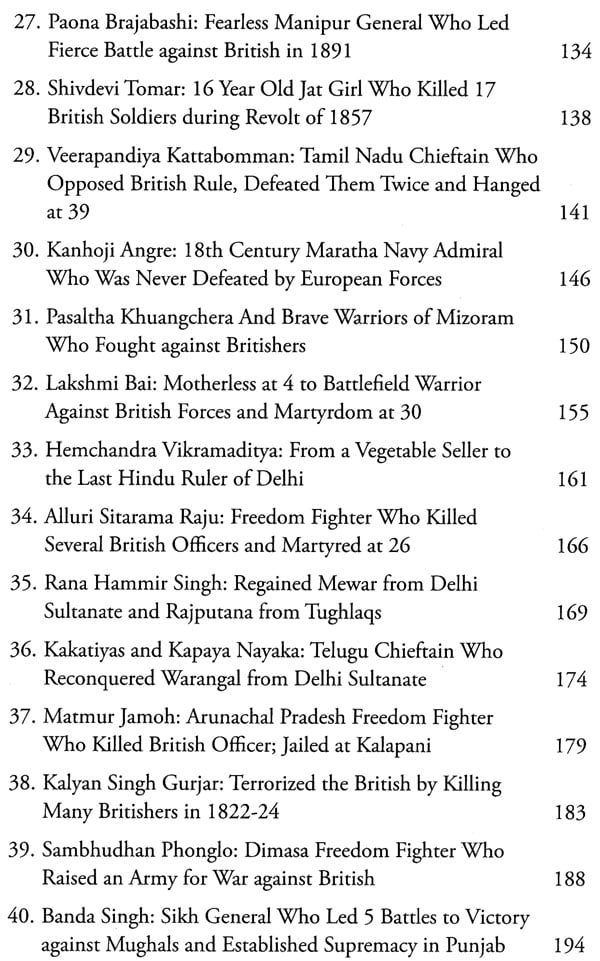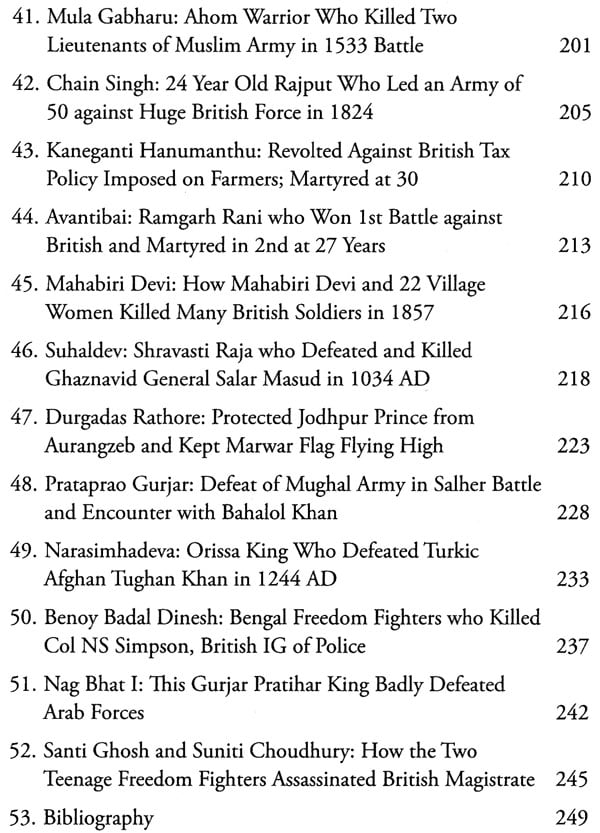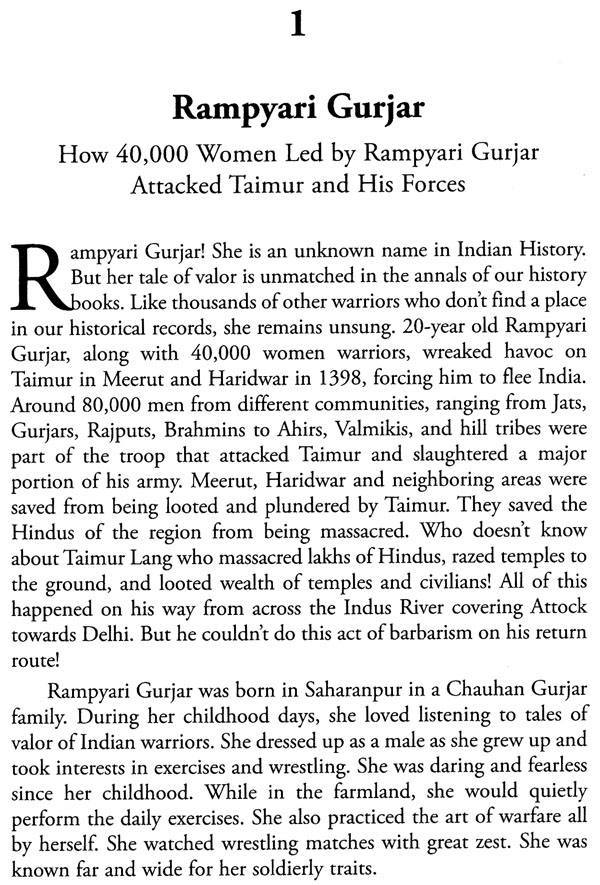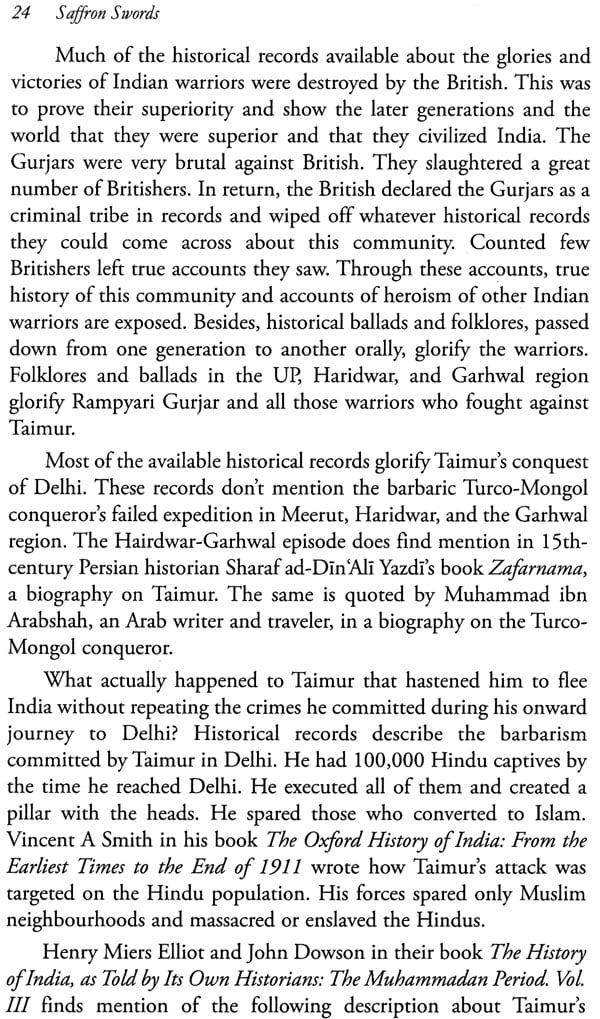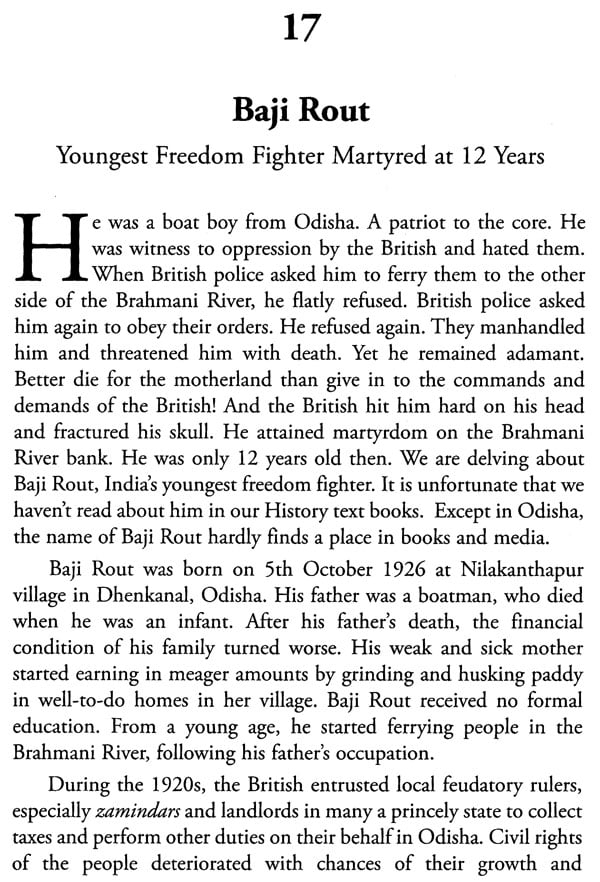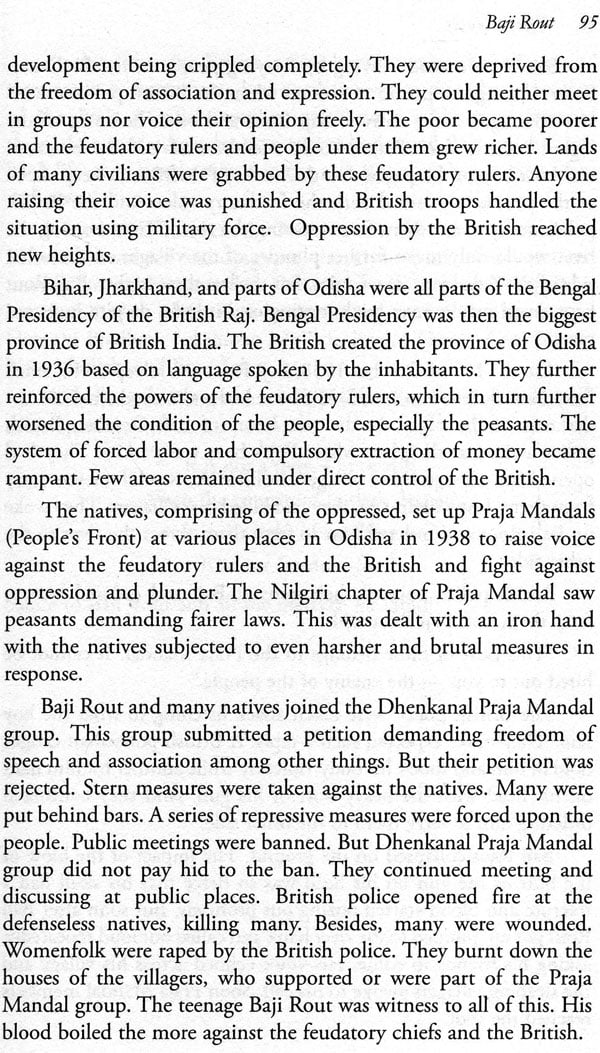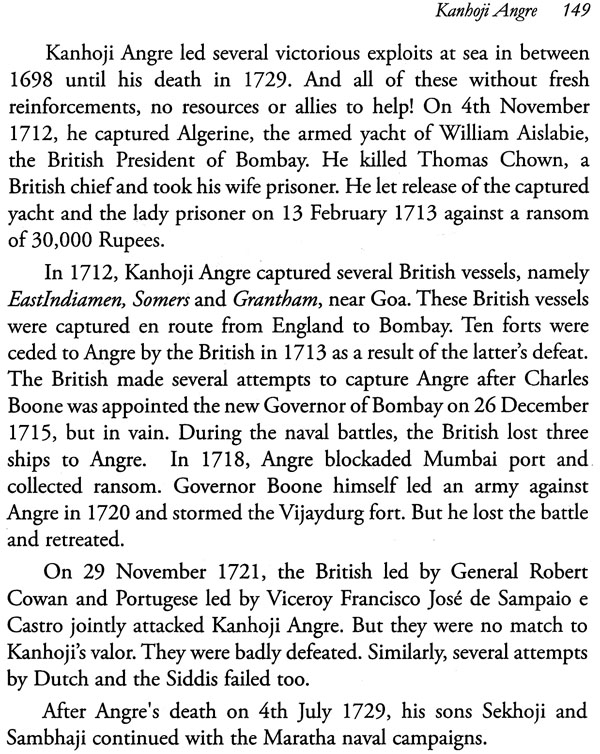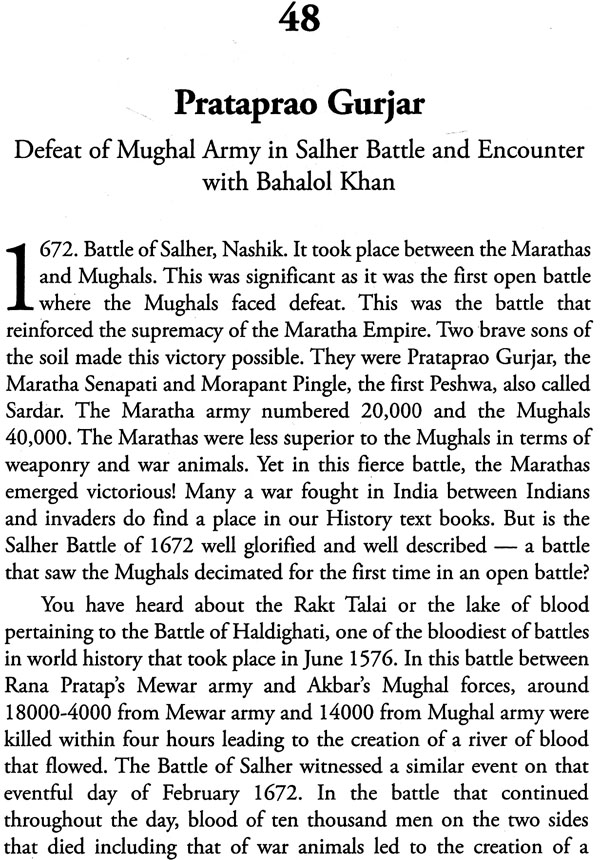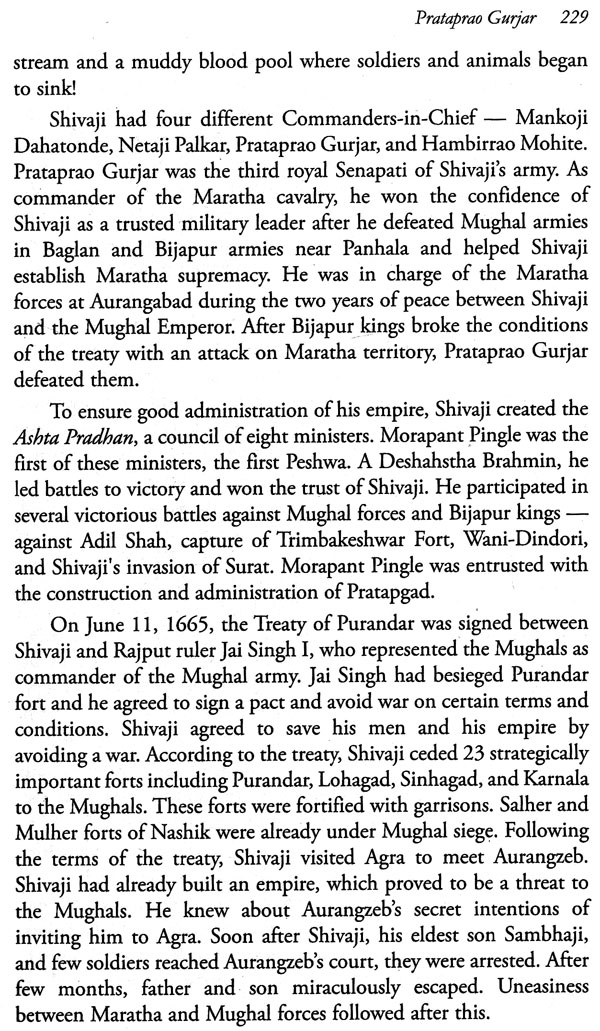
Saffron Swords (Centuries of Indic Resistance to Invaders)
Book Specification
| Item Code: | NAV622 |
| Author: | Manoshi Sinha Rawal and Yogaditya Singh Rawal |
| Publisher: | Garuda Prakashan Pvt. Ltd. |
| Language: | English |
| Edition: | 2022 |
| ISBN: | 9781942426103 |
| Pages: | 176 |
| Cover: | PAPERBACK |
| Other Details | 8.50 X 5.50 inch |
| Weight | 290 gm |
Book Description
Stories of invasions of India by foreign aggressors has been turned into a saga of defeat. The truth of the huge resistance from Indian heroes who fought and won numerous battles defending the land of Bharat has not been told. Saffron Swords puts together many unknown stories of the valiant resistance. Every inch of the motherland was fought for and protected. Hundreds and thousands of Indian warriors won battles and fought until their last breath defending the motherland. These warriors came from East to West, North to South. They were men and valorous women, drawn from all jatis, who fought against the invading hordes. There is Rampyari Gurjar who led a force of 40,000 women against Taimur, of Karnavati, the Queen from Garhwal who defeated the Mughal army in 1640. We learn of Shivdevi Tomar, the 16-year-old Jat Girl who killed 17 British Soldiers during the revolt of 1857 and of Kapaya Nayaka, the Telugu Chieftain who reconquered Warangal from the Delhi Sultanate. Stories which inspire, stories which have been buried. Indian History text books have hardly glorified these real warriors of the soil. A nation ignorant about its brave history, cannot rise up to craft a brave future. Saffron Swords, with 52 tales of valor, is a tribute to the unsung warriors of India, both men and women, from the last 1300 years. This book is the first in its series.
Manoshi Sinha Rawal & Yogaditya Singh Rawal Manoshi Sinha is an author of 8 books including two books on Krishna. 'Saffron Swords' is her latest. A postgraduate in English Literature from the University of Pune, she is a History researcher and blogger. Manoshi is the founder of `myindiamyglory.com', an e-magazine that features India from past to present with special focus on history and heritage. Yogaditya Singh Rawal is a history and fitness blogger, national level competitive bodybuilder, Mr. India 2016 (Federation Cup Bodybuilding), and Certified Fitness Trainer (ISSA-USA). An MCA from IMS, Ghaziabad and an LLB, he is an ancient martial art learner and practitioner. The husband-wife duo are avid heritage travelers, exploring historical places, ancient and medieval temples, forts and fortresses and regularly write on these topics.
This is a book of brave heroes and heroines of India down the ages. India is one of the oldest civilizations with the Vedas as one of the oldest written records. We have historical records of our ancient times recorded in the Ramayana and the Mahabharata. Various dynasties ruled the country with golden periods witnessed during the Magadhas, Mauryas, Vijaynagara, to name a few. During Islamic and colonial rule, hundreds and thousands of our warriors gave a stiff resistance. But their saga of blood and glory, their tales of valor have not been highlighted in our History text books. Few tales that find a place in the history text books are not well described. Manoshi Sinha Rawal and Yogaditya Singh Rawal have highlighted those neglected, unknown, and hidden tales of valor from the last 1300 years in this book Saffron Swords. There are 52 tales of valor, which encompass the brave exploits of warriors from across the country, from east to the west, north to the south. These include Nag Bhat I, Suhal Dev, Raja Prithu, Mula Gabharu, Raja Narasimhadeva, Rani Velu Nacchiyar, Kuyili, Hemchandra Vikramaditya, Saraswathi Rajamani, Shivdevi Tomar, Alluri Sitarama Raju, Uda Devi, Mahabiri Devi, Matmur Jamoh, Paona Brajabasi, Pasaltha Khaungchera, Rani Roipulliani, and more warriors. One of the chapters delves on Nag Bhat I, a Gurjar Pratihar king, who with an alliance of Chalukyas, Rashtrakutas, Guhils, and more forces decimated the combined Arab army led by Emir Junaid of Sind in 738 AD. In the words of Suleiman, an Arab chronicler, the Arab forces in this battle 'were scattered like hay by the hoofs of the horses of the Gurjar king and his alliances'. Inscriptions about this great victory have been found at various places including Gwalior in Madhya Pradesh.
The book has described the valorous saga of many unknown warriors. Narasimhadeva I of Orissa defeated Tughan Khan, the Turkish Muslim Nawab of Bengal in 1244 AD. He was the first king of Orissa to give a strong defence against Muslim invasion during his reign. He was one of the greatest rulers of the imperial Ganga family, of the Eastern Ganga dynasty. There is one tale of valor of Mula Gabharu, the wife of Ahom commander Phrasengmung Borgohain. She fought like Goddess Shakti in battlefield in 1533 AD against Mohammedan forces of the Bengal Sultanate commanded by Turbak Khan, an Afghan.
Khan treacherously killed Phrasengmung Borgohain in battle. The death of the commander demoralized the Ahom forces. Mula Gabharu immediately set to action, marching towards the battlefield on a horse with a flashing sword in hand. She killed two Lieutenants of the enemy including several soldiers before attaining martyrdom in the battlefield. The Ahoms won this battle. In one tale, the book describes how Kapaya Nayaka led a confederation of Telugu nobles to liberate the South Indian kingdom of Warangal from the Delhi Sultanate. Delhi was then under the Tughlaqs. He drove the Tughlaqs out of the Warangal territory in 1336. The British established their supremacy in parts of the northeastern states after the Treaty of Yandaboo signed in 1826 with Burma. It was in the 1900s that the British moved inwards towards the hill regions of Arunachal Pradesh. There is a tale of valor of Matmur Jamoh and a group of Adi warriors from Pasighat, Arunachal Pradesh. They collectively killed two British officers and their attendants in 1911. Then there is description of the valorous tale of Roipulliani, an 84 year old village chief from Mizoram. The book describes how she defended her people from British aggression. Roipulliani never paid any tax to the British nor gave in to any of their demands. The following was her declaration, which she followed till the end of her rule: "My subjects and I have never paid any tax to anyone, neither have we done any forced labor. We are the owners of this land. We must evict and chase out any and everyone who is an alien."
Today, India is a youthful country with almost 50% of her population below the age of 25. It needs role models to inspire and motivate. This book therefore fulfills a very great need of our times. I commend the authors for this pioneering effort.
Indian History text books hardly glorify the real warriors of the soil. Select few warriors find a place in the text books. We grow up reading more about the glories of invaders rather than the brave feats of our ancestors from the east to west, north to south. When our history books blank several great heroes and heroines and glorify a select few, and when we read only about defeats and no resistance by our ancestors, we end up deviating ourselves from a sense of belongingness for the nation. We do not know about our own historical roots. History needs to be retold. Our objective behind writing this book is presenting to the citizens of the country and the world about the brave exploits of our warriors from the last 1300 plus years. In this context, my husband Yogaditya Singh Rawal, co-author of this book says, "History, especially Military History being my favorite subject, I was often left wondering: were we always defeated? Were we on the losing side always? So I started reading whatever I could find anywhere beyond the NCERT books. I, like countless others, was influenced much by the defeats and routs. Such portrayal creates a feeling that we were inferior to the invaders, thus sowing the seeds of inferiority complex. This happens to such an extent that one robotically tends to think that all that is from foreign lands is better than what we have here." Rawal further says, "Let us trace the path of finding and knowing about the battles which we have never read before, about heroes we never knew existed. Let us read about the stratagems, the pure valor and strength of our brave warriors who decimated the invaders." There are 52 tales of Indian valor in this book. Many of these warriors are unheard of. Few names are Matmur Jamoh, Pasaltha Khaungchera, Kapaya Nayaka, Alluri Sitarama Raju, Kaneganti Hanumanthu, Narasimhadeva, Roipulliani, Suhaldev, Rana Hammir Singh, Rani Velu Nacchiyar, Chain Singh, Kuyili, Avantibai, Suhungmung, Mula Gabharu, Kanhoji Angre, Naiki Devi. All of these warriors put up a brave resistance against Muslim rulers and British supremacy. Few of these warriors won battles against Mughals, Turks, Lodhis, and the Sultanate. A friend Govind Raj, a doctor from Kochi, Kerala says, "We Indians are the most shameless, pride-less and gutless people with extreme deficiency of self respect. A community, a state or a nation that does not respect its history will never be taken seriously and will remain a third world country forever. We are utterly careless about our icons while we get insanely jingoistic about as trivial a thing as a Cricket match victory over Bangladesh. That is why we find it tough to find respect among ourselves and in the world community. When our history books blank several great heroes and glorify a select few, we as a nation become a joke." There are hundreds and thousands of unsung warriors from the east to west, north to south, who put up a brave resistance against Muslim rulers in battle and against British oppression. They don't find a place in history text books. Hence the citizens of India do not get to read or know about the brave exploits of their own ancestors! When citizens of a nation are inspired by the exploits of warriors from the past, patriotism robotically evolves. This spirit is lacking in India. Because real history still remains hidden. Tamal Sanyal, a friend from Varanasi, says, "The Nation which forgets its Heroes, is soon doomed, because it is their deeds only, which inspires the youth towards true patriotism and only true patriotism can inspire sacrifice and sacrifice is necessary for a Nation's survival. So it's necessary to see what kind of narrative we build - a true narrative, which demands only dedication and sacrifice or a rosy narrative which will surely ensure re-enslavement of the nation." This book is an effort to bring to you the brave feats of our ancestors — those tales of valor, which we should feel proud of.
My Rakhi brother, Anjan Mitra Da says, "History is the strength and source of knowledge for a nation. The next generation when aware of it can know and avoid past mistakes. When that is doctored in a meticulous way, the fundamental fabric of the nation is torn apart." A rich heritage and culture identifies India. Let's bask in the glory, the valor of our ancestors.
**Contents and Sample Pages**


